PICTURES - Inside NI Freemasons' hall: No handshake needed for tour of once secret location
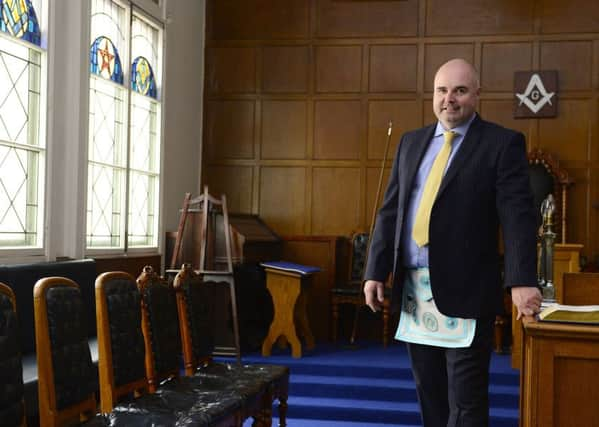

Arthur Square Freemasons’ Hall which is situated close to the main entrance to Victoria Square will open its doors to the public this weekend for European Heritage Open Day.
The trustees have also agreed to guided tours for the first time in the 150-year history of the building which used to have its windows blacked out to prevent prying eyes seeing what went on inside.
Advertisement
Hide AdAdvertisement
Hide Ad“We’re not a secret society, we’re a society with secrets,” said Jonny Gray (above), who will be leading the tours.
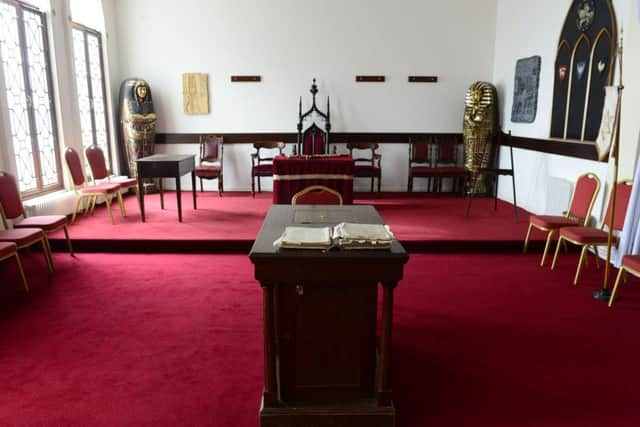

“Everybody thinks there’s a whole mystery about the freemasons, but there’s not. We’re predominantly a charitable organisation.
“Unfortunately some people take a dim view of the masons because of the perceived secrecy.”
He added: “The windows at Arthur Square Hall used to be all boarded up. It was a bit of a bomb alley. The stained glass windows were painted over to stop people from seeing in. It was a cold and horrible building. We’ve hopefully opened it up and made it warm.”
Advertisement
Hide AdAdvertisement
Hide AdHe continued: “After 150 years the trustees want to open up the doors and offer a tour. It’s an amazing building thanks to its history, its architecture and its artwork.”
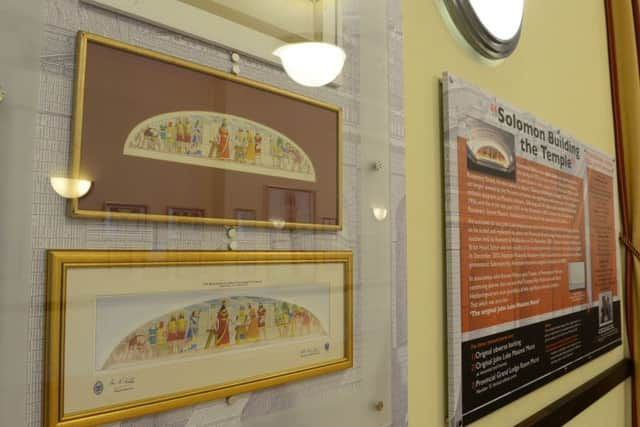

Freemasons trace their origins back to the local fraternities of stonemasons, who regulated the qualifications of masons in the 14th century.
Their teachings and rituals are linked to the building of King Solomon’s Temple in Jerusalem and just as the stonemasons progressed through the ranks from apprentice to master, so too do the modern day members.
Mr Gray explained that while freemasonry is a non-religious organisation, a belief in God is needed to join and therefore a number of different religions make up the organisation.
Advertisement
Hide AdAdvertisement
Hide AdThe Belfast man explained how tradesmen would be recognised in their guild: “How it worked was, say for talk’s sake we were building St Anne’s Cathedral, and they didn’t need any more apprentices because the masters were finishing off the job.
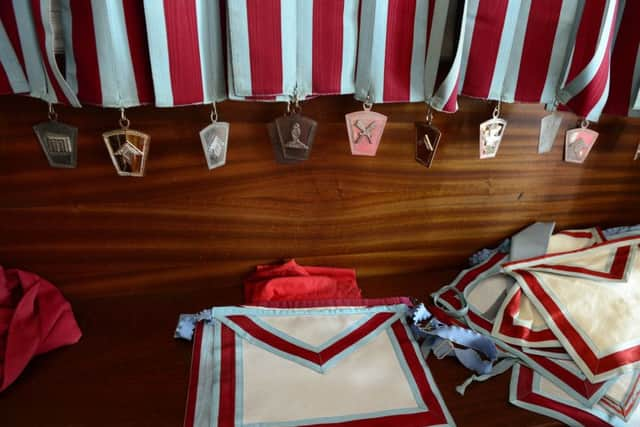

“As a mason you need to go and find work, so you find out they’re building a cathedral in Dublin so you travel down there to meet the foreman. But how does he recognise what level of workman you are? Signs, words and grips are given as a form of recognition to your level of workmanship.”
He added: “The masons stayed in big wooden huts on site and that’s where the idea of the freemason’s lodge came from.”
Of the history of the Freemasons’ Hall at Arthur Square he said: “In 1863 it was agreed that it would be of benefit to all to have a building where all lodges of the Provincial Grand Lodge of Antrim could meet under one roof.”
Advertisement
Hide AdAdvertisement
Hide AdBefore the construction of the freemasons’ hall at Arthur Square, four masonic meeting places existed in Belfast at Donegall Place Buildings, 15 Donegall Place, The Ulster Hall and 28 Divis Street (later Christian Brothers Primary School).
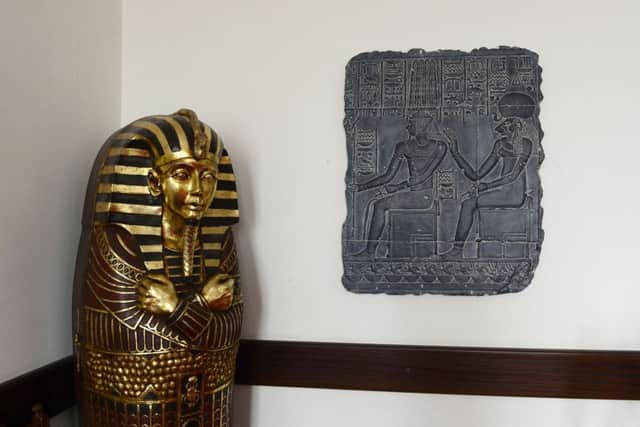

Mr Gray said: “The laying of the foundation stone at Arthur Square on June 24, 1868 was a huge event which was covered by the News Letter. There was a procession of 10,000 people through the streets of Belfast.”
When the freemasons’ Rosemary Street Hall was sold for £1.25million in 2009 – despite containing a mural by John Luke valued at £3million – the number of lodges sitting at Arthur Square rose to 107.
Mr Gray said: “Although the number of lodges has reduced over the years, Arthur Square still boasts the biggest hall and attendance in the north of Ireland.”
Advertisement
Hide AdAdvertisement
Hide AdThe hall was refurbished in 2007 and more recently it was given a further makeover to prepare it for visitors from outside the fraternity of masons.
Since 1878 the hall has also hosted the Donegall Club – one of the oldest clubs in Ireland – named after the Marquess of Donegall.
Mr Gray, who described the hall as an “undiscovered jewel of the architectural and social heritage of Belfast” said: “It is of great local interest, with many of the city’s forefathers immortalised in its records, and it has borne witness to many significant events spanning three centuries.”
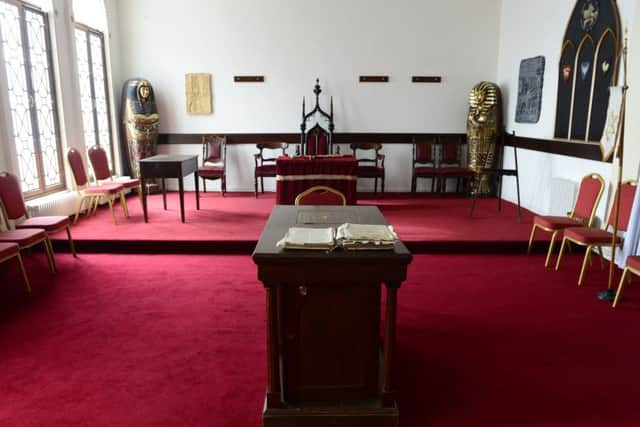

He added: “We’re calling the tour ‘No Secrets’. We’ll be allowing the public into the three craft lodge rooms, the Royal Arch chapter room, our dining rooms and the Donegall Club.”
Advertisement
Hide AdAdvertisement
Hide AdThe rooms and displays give an amazing insight into freemasonry although given their majestically decorated hall and members’ unique attire, most would find it hard to stay behind closed doors.
“Freemasons would be quite modest,” explained Mr Gray. “They don’t feel the need to show off their outfits or their surrounds.
“I’ll be explaining what goes on in the meetings. Music plays a big part in the meetings. Odes would be sung as well as our teachings and initiation ceremonies.
“The ballot box is where the saying about being ‘black beaned’ comes from. Freemasons vote on things including whether to let in new members using white and black beans.
Advertisement
Hide AdAdvertisement
Hide Ad“There’s a whole protocol to go throught before you come in just so we have the right people coming in.”
The lodge and chapter rooms within Arthur Square each take a different theme, some incorporating ancient Eygptian elements, while others have a more church-like feel.
The dining rooms on the upper floors boast incredible acoustics and the social club known as the Donegall Club has an air of cosy exclusivity while offering views across busy Corn Market.
The walls too have stories to tell, adorned with portraits of notable freemasons within the Provincial Grand Lodge of Antrim.
Advertisement
Hide AdAdvertisement
Hide AdWithin the Wilson Room, named in recognition of Ronald Wilson – a trustee of the hall from 1999 to 2009 and a driving force behind the renovation project – many of his certificates and robes from his distinguished time as a mason are on display.
The tour itself, while led by Jonny Gray, who is also head caterer at Arthur Square, is aided by a number of story boards which discuss some of the key elements of freemasonry and include pictures of the hall down the years.
On a board entitled secrecy it says: “The only secrets of freemasonry are those concerned with its traditional modes of recognition.
“It is not a secret society as all its members are free to acknowledge their membership and will do so in response to reasonable inquiries.
Advertisement
Hide AdAdvertisement
Hide Ad“Its aims and principles are not secret and its constitutions and rules are available to the public.
“It does, however, regard some of the its internal affairs as matters private to its members – as do many other societies.”
The hall in the centre of Belfast is home to a number of Craft Lodges, Royal Arch Chapters, Preceptories, a Knight Council and three Prince Mason Chapters.
Arthur Square Freemasons’ Hall also houses a unique artwork by one of Belfast’s most celebrated artists – John Luke.
Advertisement
Hide AdAdvertisement
Hide AdLuke was commissioned in the spring of 1955 to execute a mural depicting Solomon’s Temple in the masonic hall at Rosemary Street. Measuring 31 feet long and seven feet high, it was completed November 1956, and the artist was paid £375.
In 2000 the mural was appraised at £3 million.
Rosemary Street hall was sold for £1.25million some years later and now lies derelict with the mural still inside.
An unknown piece of preparatory work, measuring 14.5 inches long and 3.25 inches high, which was to be scaled and replicated to adorn the Provincial Grand Lodge Room, now adorns the walls of Arthur Square.
Sir Charles Lanyon – the architect who designed a number of public buildings in Belfast including Queen’s University, Crumlin Road Gaol and Custom House Square – was a devoted freemason whose name is becoming increasingly celebrated in the city.
Advertisement
Hide AdAdvertisement
Hide AdMost recently Central Station has changed its name to Lanyon Place in honour of his role in the city’s development.
Charles Lanyon, then a member of parliament for Belfast, laid the foundation stone for Arthur Square and was both deputy and grand master of the Provincial Grand Lodge of Antrim.
Mr Gray said: “I do think that because a lot of things are starting to be named after him, it’s great that we have a dedicated pillar of society who was involved in our organisation.”
Another famous freemason is United Irishman Henry Joy McCracken who was hung outside the front door of Arthur Square and whose father started the News Letter. There is another newspaper link in the form of Robert Baird who established Baird’s Telegraph, later the Belfast Telegraph.
Advertisement
Hide AdAdvertisement
Hide AdOther notable masons include motorbike legend Joey Dunlop, war hero Blair Mayne, and philanthropist Dr Thomas Barnardo.
• Arthur Square will be open to the public as part of European Heritage Open Days on Saturday and Sunday, September 8 and 9 from 10am to 4pm on both days